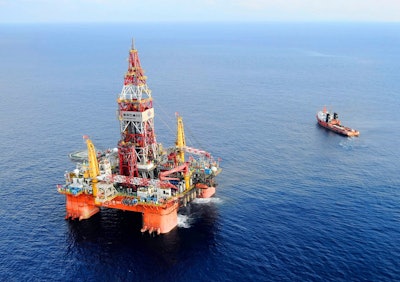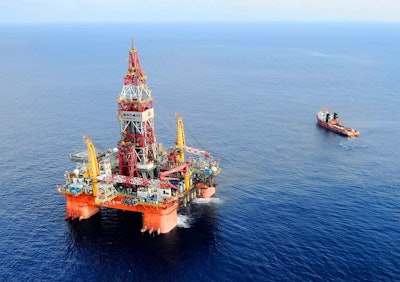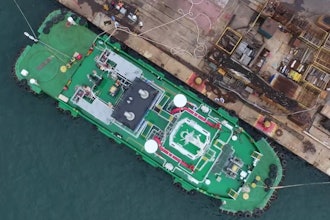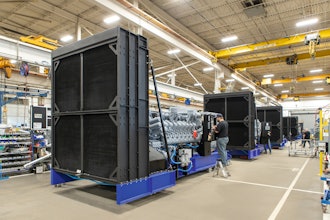
Rig moves are vulnerable times for offshore drillers. Striking a balance between keeping a cap on costs, managing data transfer and remaining safe and compliant in various jurisdictions is a difficult challenge.
The task of managing the reassignment of a rig from one company to another falls to the CFO and financial department. However, the right technology support can make this job easier – at every stage of the rig move.
There are 4 steps organizations must take to ensure their rig move is a success:
1. Preparation: Visibility Is The Name Of The Game
Before moving a multi-million-dollar vessel, a process should be implemented to document the current status of the rig and all the operational processes involved - whether offshore contractors are moving it between geographical areas, handing over to another operator or performing major maintenance.
The right project-based solution should help from planning phase to the start of the move, through transportation and final sign off at a new site – all within a single solution. In this instance, a site is defined as a logistical unit holding the history of all maintenance performed, as well as all financial transactions and inventory values for a rig or vessel. Tracking all the details of a site will provide the correct starting point and visibility necessary to remain compliant throughout the entire move process.
By providing full support for traceability of the rig’s lifecycle, organizations can avoid re-classification of the rig and ensure environmental and safety regulations are met. It should also support local tax and accounting regulations in whatever geographical area the rig is based, or will be in the future, while simultaneously ensuring that the move is conducted safely. These local regulations may have implications for how the rig is staffed, which has implications for the number of modular accommodations, the type of maintenance documentation required and in the case where inventory kept in jurisdictional waters is taxed, the number of spares and repairs it makes sense to keep on the rig.
2. Planning: Analysis And Reporting
When processes have been documented, management can then begin to plan and forecast an upcoming move. With proper role-based security, users can easily retrieve queries and reports for internal and external reporting, making managing compliance and real-time visibility far easier. Faster reporting and accurate forecasting is extremely beneficial to drilling contractors, enabling management to rely on up-to-date key performance indicators, financials, environmental impact and operational costs.
When considering all the processes involved in a rig move, accurate forecasting provides an opportunity for drilling contractors to prepare and decide what financial transactions need to remain, be closed or recreated. A solution which can simulate transactions when moving a company from contract to contract provides the foresight organizations need to produce informed plans, as the drilling contractor can evaluate what to do with each transaction in relation to the current rig and company.
 (AP Photo)
(AP Photo)Once a scenario has been simulated, contractors can project the right cost, depreciation and value in an upcoming contract before the rig move process begins. Being able to see the impact of moving a rig from one company to another is a benefit of accurate forecasting you get from a single end-to-end, fully integrated solution. The ability to forecast in this manner saves time and money for drilling contractors, critical in the oil and gas industry - now more than ever.
3. Execution: Decisionmaking And Compliance
Once a rig move has begun, drilling contractors require visibility over vast data sets - accounting currencies, work orders, maintenance transactions and more. During the move, management also need to monitor the environmental impact, cost of operations, support for quality assurance and health & safety management.
Unfortunately, many drilling contractors still struggle with their disjointed and unintegrated solutions. None of their existing systems are comprehensive or agile enough to fully map the diverse requirements, processes and extra transactions required on a rig during a move. By bringing together all these data streams into a single solution, drilling contractors can reap the benefits of analyzing large amounts of real-time information - presenting an accurate picture of events and enabling well-informed decision making during the move.
Having access to a rig’s complete maintenance history in one solution enables traceability, but also guarantees compliance. The global oil and gas environment demands a solution which can quickly adapt to compliance regulations to reduce non-compliance risk. Rig move solutions must enable full visibility into IFRS, US GAAP and SOX compliance as well as efficient risk management and environmental impact. Because the United Nations Convention on the Law of the Sea has divided the sea into zones with different legal status and applicable law, and other rules may apply in territorial waters within 12 nautical miles of a coast, rigs crossing these jurisdictions may need to conform to different rules. Rig move must also take into account differing regulations for the asset itself, including the number of lifeboats, fire and gas detection systems, number of individuals allowed to sleep in a single cabin and other criteria.
4. Post-Move: Making Manual Error A Thing Of The Past
From beginning to end, manual transactions pose significant risk to rig moves - causing inaccuracy, delays and spiralling costs. If a drilling contractor begins a rig move with fragmented systems, there is a risk the finance department will see an inaccurate picture of how the move has taken place.
Fragmented systems handling rig move processes may mean it takes the finance department months to recognize a rig has been moved to a new location. This lack of visibility and delay of information sharing significantly hinders operations, while backtracking to correct data creates unnecessary overhead costs. A solution lacking in integration may also result in rigs are moved from one locale to the next without being reconfigured to account for different regulatory regimes, placing the organization at risk of fines and recertification.
The right enterprise software can extract necessary data and then alert users of what objects need to be cancelled, closed and/or transferred from projects to conduct compliant and well-documented rig moves. This functionality enables a much more cohesive transfer of data, improves documentation for finance, optimizes processes and reduces error postings, manual corrections and overall transactions.
Putting Offshore Drillers In The Driver’s Seat
Real-time visibility, optimized solution processes and accurate forecasting bring real value to drilling contractors during mission-critical rig moves. These benefits directly contribute to industry efforts to reduce overheads and cut unnecessary costs.
For some organizations, adapting to the challenges of a rig move in the transforming oil and gas market may be intimidating. With the support of solutions designed to maximize operations, compliance and the bottom line, offshore drillers can make inefficient rig moves a thing of the past.
Patrick Zirnhelt is a Vice President with heavy involvement in Enterprise Service & Asset Management at IFS North America.






















